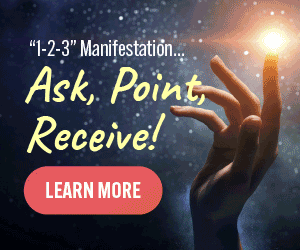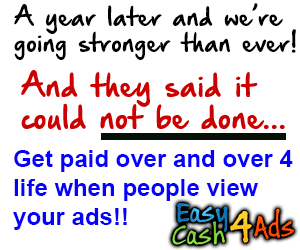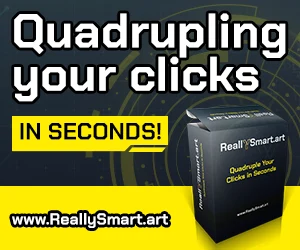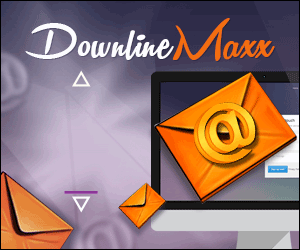Here are six steps to bring a product idea to life. So, you’ve got this amazing product idea that you’re dying to get out of your brain and into people’s hands, but not sure where to start? Well, the first thing you need to do is gently smash that subscribe button. Second thing you’ll need is an amazing idea. No, you do not need to be the next Elon Musk and come up with an outrageous idea or go inventing a rocket.
Sometimes just adding a sprinkle of innovation to an existing product can do wonders and can be the winning idea that sets your own product apart. This is how the best product creators come up with milliondoll ideas. They use the scamper model. Here’s how it works. S is for substitute.
Start by analyzing an existing product or product category. What are the main components or features? What if you replaced one of those components with something else? For example, what if we took closed toe sandals and made them out of foam so they were waterproof, light, and made them even uglier? Next, we have combine.
Look at two separate products or product features. Could these two products be combined to create something more innovative? The idea here is to merge different elements of different products to create something new. A is for adapt. Think about existing products in other industries.

How can their features or designs be adapted to a new market or audience? For example, what if you took this camping backpack and adapted some of its features for the design of a camera bag? Questions like, “What else is like this?” or “Who else has faced a similar problem?” can spark ideas for adaptations.
Modify. Take a product and think about how you can change its size, shape, function, or any other attributes. For example, if most people like to listen to music at the beach, why not put speakers right on a cooler? P stands for put it to another use. Consider how a product designed for one purpose might be repurposed for another.
Like this jail cell. What if instead of using it to punish criminals, we used it to lock up anyone who didn’t subscribe to this channel.
When coming up with product ideas, think to yourself, how can this be used differently? Or who else can use this? Next, we have eliminated.
Think about a product and what the non-essential components of it are. What happens if we remove them? By focusing on what can be removed or reduced, you simplify the product, process or service. And then we have reverse. Think about inverting the order or arrangement of a product or its features.
For example, instead of a hot tub, what if we filled it with freezing ice water? Yes, people actually enjoy that. Flipping your thinking like this can lead to unexpected and innovative products. Once you have an idea, you need to do some research and validate it. Research and validation is how you know if your idea will actually make money or whether it’s just something you think is cool.
First, get some hard data about whether people are interested in your general idea. Go to Google Trends, which will give you historical data about what people are searching. Type in questions that people would ask related to the problem your product solves. If your product is a marina wool shirt for travelers, for example, you might type in clothing you don’t have to wash. Next, you’ll want to do some competitor analysis.
Search Google to try and find companies already doing a similar version of your product idea. When you find them, look at their website, social media, and see if they have ever mentioned sales numbers publicly in investor reports, LinkedIn posts, or on podcasts.
Contrary to popular belief, competition is a good thing. If someone has already built a thriving business doing something similar, then you know a market exists. The next way you can validate an idea is by finding forums where your potential customers hang out.
Find subreddits related to the problem you solve and simply ask for honest opinions on your product idea. You might even get feedback that will help you build a better product. The key here is to not be afraid that someone will steal your idea, but instead to prioritize getting realtime feedback from the community. One successful product creator that used this method was Eric Baron, who made Stardew Valley. When he couldn’t get a job in the gaming industry, he turned to Reddit to get feedback on the process of building his game.
Today, Stardew Valley has sold over 20 million copies. Another way to validate an idea is using the weightless method. To do this, build a landing page and collect emails, enticing customers to sign up early by the prospect of getting early access or an early bird discount. But hands down, the most effective way to validate an idea is through crowdfunding. Crowdfunding platforms like Kickstarter and Indiegogo are the best way to validate an idea because they let people vote with their wallets.

Instead of just asking someone if they would buy your product and potentially being misled, crowdfunding tells you if people will put their money where their mouth is. Besides mitigating risk, crowdfunding also lets you raise money to develop your product, so you don’t need to dig into your hard-earned savings. Your core goals in the research phase are to answer these two questions. One, is there a market for my product with proven demand? And two, can I differentiate myself from the competition?
Once you’ve validated your idea, you need to start planning execution.
Product creators aren’t defined by their ability to come up with good ideas, but by their ability to make them real. The best way to do this is by drawing your idea out. Grab your pen, a notebook, and draw out what your product should look like, and make notes about how it should function. Your diagram should also have a list of different components, features, and materials.
Your diagram should focus on the most important parts of your product design. You don’t need every little detail mapped out, but you need the broad strokes of how your product will work and what makes it different. You can even take this part a step further and think about what your unboxing experience should look like. If you are really bad at drawing, don’t worry. You can easily find an illustrator on Fiverr, Dribble, or Upwork.
Now, with a plan in hand, it’s time for some prototyping. No one makes a perfect product the first time. Instead, they use prototypes to iterate on their product design and test features and functionality.
Finding unforeseen problems or wrong assumptions is exactly what this process is all about. To start, make a basic version of your product.
Then, test its functionality yourself and with people who represent your ideal customer. Once you gather feedback on what’s working and what’s not, you modify your product. You repeat this process until the product is ready to be manufactured. For products where you have the skills to develop them on a small scale, you might be able to create prototypes yourself. But for more complex products, you’ll likely need professional help to create physical samples, 3D renders, or through 3D printing.
You can find people to help you develop a prototype on Upwork, Freelancer.com, or by searching Google for prototyping agencies.
Some manufacturers will also work with you to create prototypes. The next step is sourcing. For this stage, you’ll need materials and people who can turn your prototype into thousands of sellable products.
In this stage, you will be sorting out your supply chain, which are the string of vendors and resources you need to get your product made and in your customers hands.
This stage will require sending emails, negotiating, and maybe even a few factory visits. When sourcing, you can start by researching suppliers online. Usually, this will start with a Google search, but there are also platforms like Thomas Net, Makers Row, and Alibaba that can help you find suppliers. However, one of the fastest ways to find a supplier is by going to a trade show.
That way, you can see hundreds of suppliers and samples in one day. In either case, you will need to order sample materials to check their quality and make a visit to the factory so that you can understand if it’s a legit operation. When finding suppliers, you want to have a minimum of two suppliers in the long run so that you aren’t relying on a single supplier.
Two key questions you want to answer in this stage are one, how much will it cost? And two, how long will it take?
Step six is costing. This is the process of crunching numbers in a spreadsheet to find a number called cost of goods sold, aka COGS. Your COGS is how much it costs to get your product made and into a customer’s hands. This information is absolutely crucial in knowing how to price products profitably. COGS is a sum of costs directly related to producing your product.
One, manufacturing, which are labor and materials. Two, shipping, which are transit, storage, and import fees. Three, packaging. And four, payment processing. Your COGS doesn’t include operating expenses like marketing, rent, and insurance.
So, don’t worry about that at this stage.
This costing stage will be pretty vital for making the right decision about what supplier to go with. You should create different sheets with different scenarios and compare them. For example, international suppliers might seem cheaper at first glance, but once you factor in shipping, that might not be the case. So, there you have it, the six key steps to product development.
If you use this information to make the next monopoly and get rich, remember who helped you out. Or you can just thank me in advance by giving this video alike and subscribe. We’ll see you in the next video.
VIDEO https://youtu.be/Oq-fMgvk5p4
https://sparklp.co/63d58796/
https://www.webfire.com/a/?id=39079&aff=1
Discover more from Marketing Revolution
Subscribe to get the latest posts sent to your email.























